Pulse Rate Monitoring Sensor
In the rapidly evolving field of biometric technologies, pulse sensors emerge as key devices for monitoring dynamic health metrics, particularly heart rate. As requisite tools in both clinical and non-clinical settings, these sensors utilize photoplethysmography (PPG) to detect blood volume changes induced by the cardiac cycle. Among the various methodologies for heart rate detection—such as electrocardiograms (ECG) and phonocardiography—the photoelectric pulse wave method stands out due to its adaptability and ease of integration into portable devices.
This article digs into the intricate mechanics of pulse sensors, focusing on their operational principles, types—specifically, transmission and reflection sensors—and advanced functionalities. It further explores their extensive applications, from health monitoring to integration in wearable technologies, underlining their significance in enhancing proactive health management and overall well-being.
Catalog
Understanding Pulse Sensors
A pulse sensor is a useful device used in biometrics and health monitoring. It is designed to detect the changes in blood volume within blood vessels that occur with each heartbeat, known as a pulse wave. This pulse wave is insistent for measuring heart rate. There are several methods to measure heart rate, including electrocardiograms (ECG), photoelectric pulse wave detection, blood pressure measurement, and phonocardiography. The photoelectric pulse wave method is the most common in portable devices due to its practicality and efficiency.
Pulse sensors using the photoelectric pulse wave method are divided into two categories: transmission and reflection.
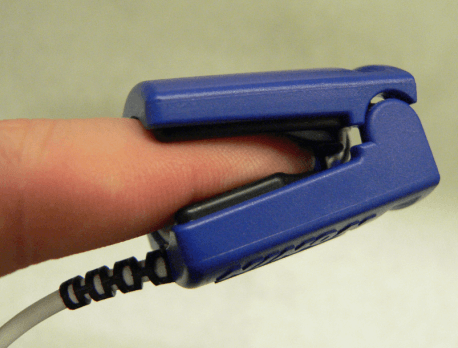
Figure 1: Transmission Sensors
These sensors shine red or infrared light through thin parts of the body, such as the fingertips or earlobes. The light passes through easily and detects changes in light transmission caused by the flow of blood.
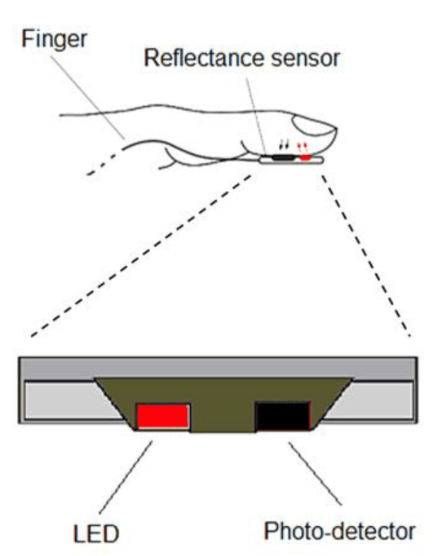
Figure 2: Reflection Sensors
These sensors, like ROHM's "Optical Sensor for Heart Rate Monitor," project light onto the skin and measure the reflected light. The amount of reflected light varies with blood flow, allowing the sensor to gauge heart rate non-invasively and effectively from the skin's surface.
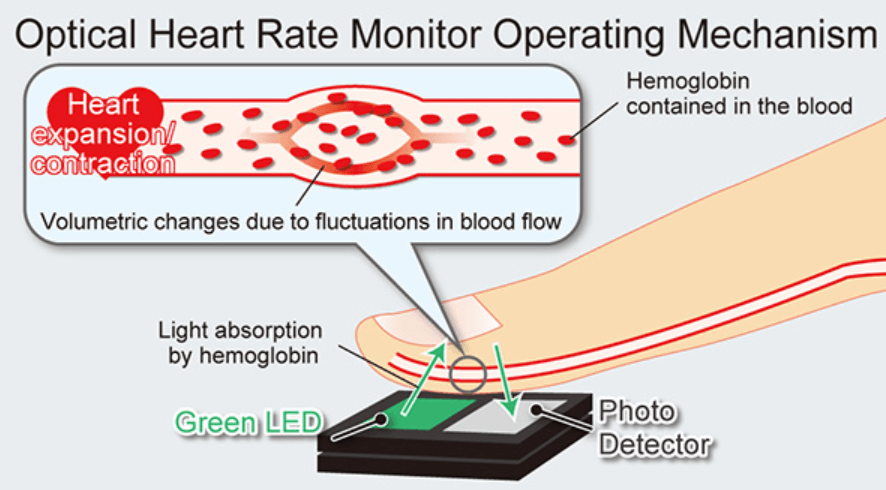
Figure 3: Reflection-Type Pulse Sensor
Reflection-Type Optical Pulse Sensors
A reflection-type pulse sensor is an advanced device for monitoring heart rate. It works by directing light—usually infrared, red, or green—onto the skin and measuring the light that reflects. The changes in reflected light are caused by the different absorption rates of oxygenated hemoglobin in the bloodstream during heartbeats. This technique effectively captures the pulse wave signal.
Reflection-type sensors have a broader application range compared to transmission-type sensors, which are limited to transparent body areas like fingertips or earlobes. Reflection sensors can be placed on any skin area, making them more versatile.
In addition, these sensors are highly adaptable to various environmental conditions. They are especially useful in outdoor settings where sunlight, which contains infrared light, can interfere with sensor accuracy. By using green light, which is less affected by ambient infrared noise, reflection-type sensors provide consistent and reliable readings. This feature is used for wearable devices like smartwatches that need to operate accurately in different lighting conditions.
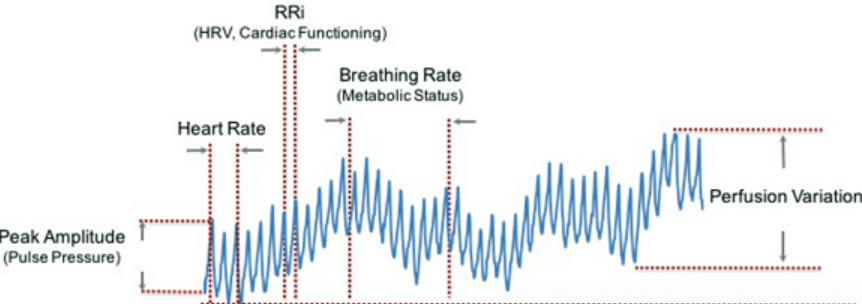
Figure 4: (Optical Sensor for Heart Rate Monitor) Waveform Analysis
Optical Heart Rate Monitoring Pulse Sensors
Pulse sensors are basic for obtaining insistent health metrics through pulse waveform analysis. By examining these waveform variations, the sensors can measure arterial blood oxygen saturation (SpO2) and heart rate variability (HRV). These metrics are mainly for assessing stress levels and vascular health.
The accuracy and speed of these sensors enable effective health monitoring in both clinical and non-clinical settings. They support proactive health management by allowing continuous tracking of dynamic signs. This ongoing monitoring enhances preventive healthcare strategies and helps provide comprehensive patient care. Through timely insights into cardiovascular health, these sensors play a significant role in maintaining overall well-being.
Principles of Pulse Sensors
A pulse sensor operates on a simple yet sophisticated principle using Photoplethysmography (PPG). It emits green light onto an area of the body, such as a fingertip. The sensor then measures the light that is absorbed and reflected. This process focuses on the absorption of green light by oxygenated hemoglobin, which changes with each heartbeat.
Green light is directed onto the skin. Oxygenated hemoglobin in the blood absorbs this light, and the amount absorbed fluctuates with the pulse. These fluctuations in light absorption create a subtle signal that corresponds to the heartbeat.
The initial signal is often noisy and weak. Advanced electronic filtering techniques are used to amplify and clean up the signal. The refined signal provides a precise and reliable measurement of heart rate and blood volume changes.
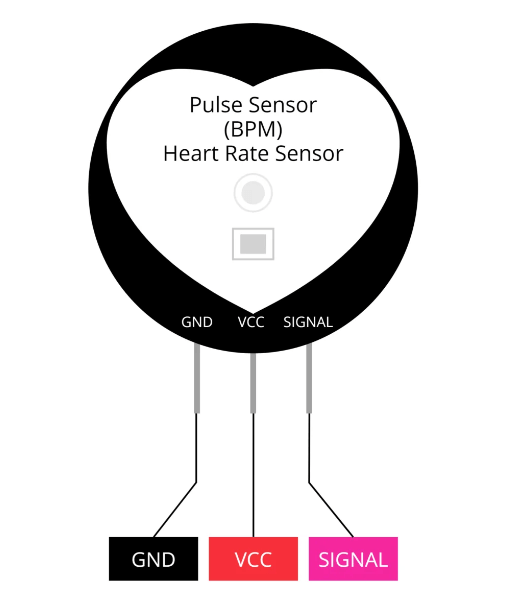
Figure 5: Pulse Sensor Pinout
Detailed Pinout Configuration for Pulse Sensors
The pulse sensor has a simple and practical pinout configuration. It uses a 24-inch flat ribbon cable with three male header connectors labeled S (Signal), + (VCC), and – (GND).
• Signal (S) Pin: This pin outputs the measurement signal. It connects directly to an Arduino's analog input for data processing.
• Power (VCC) Pin: The + (VCC) pin connects to a power supply. It can handle either 3.3 or 5 volts.
• Ground (GND) Pin: The – (GND) pin provides the required grounding.

Figure 6: Pulse Sensor to an Arduino
Connecting a Pulse Sensor with Arduino
Wiring a pulse sensor to an Arduino is straightforward and involves three simple connections.
Power Connection: Connect the power wire (+) to either the 3.3V or 5V supply on the Arduino, depending on the sensor's voltage requirement.
Ground Connection: Attach the ground wire (-) to the Arduino's ground (GND) terminal.
Signal Connection: Connect the signal wire (S) to the A0 analog input pin on the Arduino.
Key Features of Arduino-Compatible Pulse Sensors
The Pulse Sensor Arduino Compatible is a precise and adaptable device for heart rate monitoring in various Arduino environments. It works seamlessly with popular Arduino boards like Uno, Mega, Leonardo, and Due, making it suitable for educational projects and complex research.
• High Accuracy: The sensor uses an optical sensor to track blood volume changes with each heartbeat, maintaining an error margin of only ±2 beats per minute across a heart rate range of 30 to 240 beats per minute.
• Real-Time Data Engagement: A built-in LED pulses in sync with each heartbeat, providing a visual cue of heart rate dynamics. This is particularly useful for biofeedback applications, aiding in stress management and physiological awareness.
• Low Power Consumption: Consumes only 4mA, making it ideal for battery-operated projects. This ensures sustained performance and reliability in remote or mobile applications.
• Customizability: The sensor offers extensive programmability, allowing users to set heart rate alarms, activate devices like motors in response to heart rate changes, and implement features tailored to specific needs.
• Robust Build: Designed for durability, it can handle consistent use in various settings, including clinical, laboratory, and home environments.

Figure 7: Pulse Sensor Amped
Enhanced Pulse Sensor Amped Model
The Pulse Sensor Amped is a standout plug-and-play device for Arduino-compatible heart rate monitoring, designed to meet the needs of a diverse user base, including students, artists, athletes, and developers in gaming and mobile technology.
The Pulse Sensor Amped is designed to elevate the quality and efficiency of heart rate monitoring with several key features and enhancements. It offers amplified signal and noise reduction capabilities, ensuring the reliability and speed of data acquisition. The sensor supports both 3V and 5V Arduino platforms, allowing for flexible integration across various hardware setups. Significant improvements have been made to the Processing visualization software and the Arduino sketch that accompanies the sensor. These upgrades simplify the setup process while enhancing data accuracy and retrieval speed.
It is ideal for educational purposes, particularly for students learning about biometrics and health monitoring. Artists can use the sensor in creative endeavors, incorporating live heart rate data into interactive installations. It is also beneficial for fitness tracking, allowing athletes to monitor their heart rate in real-time during training sessions.
Conclusion
Pulse sensors, particularly those employing the reflection-type photoelectric pulse wave method, have demonstrated profound versatility and reliability in monitoring dynamic health statistics like heart rate and oxygen saturation. These devices are ingeniously designed to adapt to varying environmental conditions, making them ideal for wearable technology used in diverse settings—from medical labs to outdoor fitness activities. The technical sophistication of pulse sensors allows for detailed data acquisition through simple yet effective interfaces with systems like Arduino, facilitating both educational and practical applications.
By enabling continuous and real-time health monitoring, pulse sensors play a key role in the advancement of preventive healthcare, offering individuals timely insights into their physiological conditions. As technology progresses, the integration of such sensors in everyday devices promises to revolutionize personal health management, making it more accessible, immediate, and interconnected.
Frequently Asked Questions [FAQ]
1. What is the purpose of monitoring the pulse?
Monitoring pulse allows you to assess the heart rate and rhythm. This is mainly for detecting irregularities, understanding heart health, and evaluating how well the cardiovascular system responds to different conditions like exercise or stress.
2. How to connect a pulse sensor?
To connect a pulse sensor:
Position the sensor on a body part where it can detect blood flow, such as the fingertip or wrist.
Secure the sensor to ensure consistent contact with the skin without restricting blood flow.
Connect the sensor to a monitoring device or app, following the manufacturer's instructions to ensure proper setup and calibration.
3. What is the purpose of your pulse?
Your pulse represents the tactile arterial palpation of the heartbeat. It reflects the heartbeats per minute, which indicates the heart's effectiveness in pumping blood throughout the body, delivering oxygen and nutrients to tissues.
4. What is the role of pulse?
The pulse serves as a dynamic sign to measure the rate, rhythm, and strength of heartbeats. This information helps in diagnosing cardiac conditions, determining physical fitness, and monitoring the effects of medications or other treatments on the heart.
5. Why is it noteworthy to monitor pulse rate?
Monitoring the pulse rate is dynamic for:
Detecting heart conditions like arrhythmias, tachycardia, or bradycardia.
Guiding treatment for cardiovascular conditions.
Assessing fitness levels and adaptations to exercise.
Ensuring safety in clinical settings during surgery or sedation.
Monitoring the impact of medications that affect heart rate.